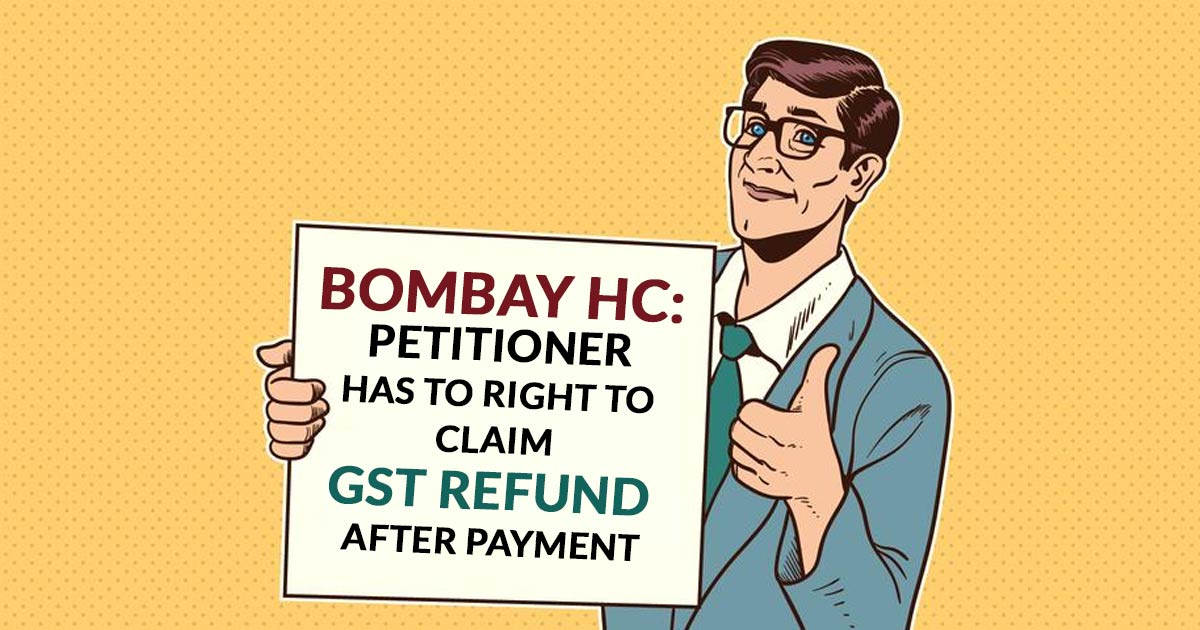
The Bombay High Court took a case for cognizance on Monday regarding the use of coercive actions by GST authorities to collect taxes from taxpayers. The respondents argued in court that tax payments have already been paid voluntarily, and the court confirmed that the petitioner can ask for a refund if they have already paid the tax.
However, the Bombay High Court emphasised that the GST authorities must follow the correct procedures to recover taxes. According to a previous statement from the Central Board of Indirect Taxes and Customs (CBIC), forced tax recovery is not allowed, and even voluntary tax payments have a proper procedure.
Abhishek A. Rastogi, Founder of Rastogi Chambers, who is representing the petitioners in similar cases where money has been collected without following the legal process, stated that both the board and the GST Council believe that all legal procedures must be followed before recovering taxes from taxpayers.
Therefore, any tax recovery made outside of the legal process can be reviewed by a court and challenged in the jurisdictional High Court in order to obtain a refund. If tax money is collected involuntarily before a show cause notice is issued, it can be requested for reimbursement in court, as the case’s merits can only be determined after the notice is received. Rastogi concluded that the Bombay High Court’s decision to refund unintentionally paid taxes will significantly boost industry confidence and contribute to a more compliant tax system.
Former CBIC Chairman Najib Shah explained that the CGST Act does not prevent taxpayers from voluntarily paying taxes and interest based on their own assessment, even before receiving a formal notification.
He added that the legislation also stipulates that no penalties are imposed and that all procedures are presumed to have ended in cases where the tax or interest is paid within 30 days of the notification being issued. The authorities are expected to make the taxpayer aware of this advantageous option so that, should he choose to do so, he might take advantage of it.
Important: How to File GST Refund Claims Manually? Step-by-Step Guide
The CBIC has also given guidelines to this effect, stating that the recovery should be voluntary and not the product of compulsion. The authorities are not expected to force the taxpayer to utilise the facility. In cases of default where it is determined that the taxpayer was forced into making a payment, the instruction clearly directs the Pr CC/CC/Pr DGGI to take action. Ensuring that he said the department will conduct the necessary investigations and take appropriate action against the at-fault authorities if there has been a violation of the instruction.
The government is stepping up its war on bogus invoices and fake businesses that alter input tax credit claims as part of its ongoing efforts to prevent tax cheating. Through its detection drive, the CBIC has already found 24,000 instances of bogus GST invoices. According to Vivek Johri, the chairman of CBIC, in a previous media interview, these fraudulent actions led to the discovery of false input tax credit claims totalling Rs. 63,000 crores, which resulted in the booking of about 8,000 cases.
He continued by saying that there are three simultaneous processes taking place in relation to fake invoices and fake businesses established for bogus ITC. To handle this rise in bogus billing and invoicing, CBIC launched a campaign back in August 2020.
Important: Special All-India GST Drive Against Fake Registrations
The second one is a unique drive that was started this year in May. It will continue until July 15 because it was intended to last two months. The Center and the States are jointly managing this. The third parallel stream that is ongoing is the investigation into the Noida case when seven people were detained for setting up numerous fictitious businesses and disseminating false ITC.









